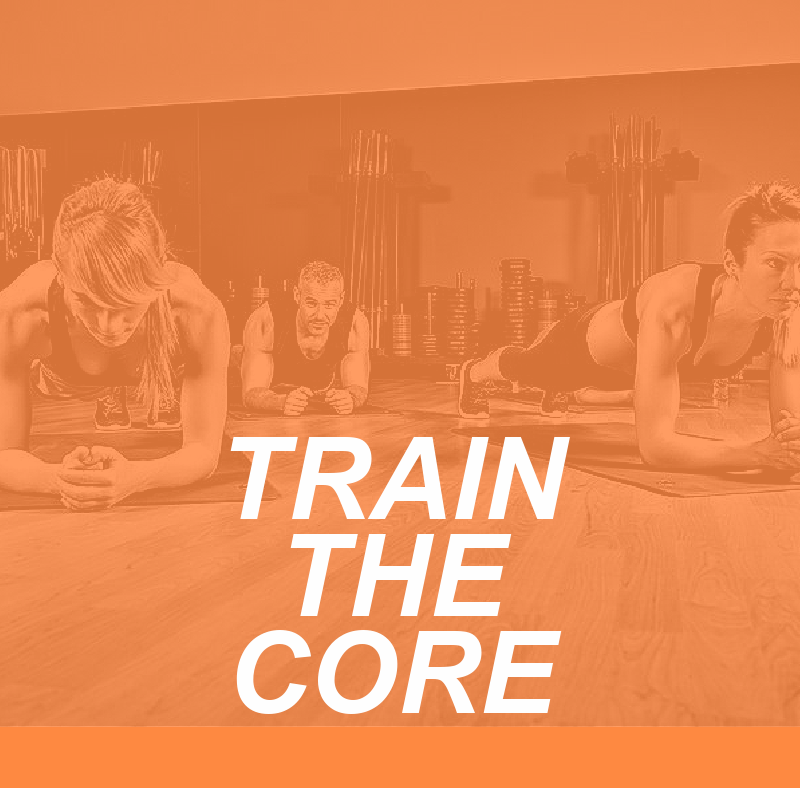
It’s a popular fitness belief that the “core” is all about the abs – the anterior compartment of the body. This isn’t entirely inaccurate, but it paints a very narrow picture of what the core is and does for the body. The core is comprised of more than the abdominal muscles. In addition to muscles such as the TVA and those of the pelvic floor, the core also includes the low back, the thoracic spine, and the larger hip and glute muscles. The core is really the center of the body. While abdominal training is valuable and useful, it’s not always the most effective way to train the core in absence of other exercises.
Train the Core Through a Scientific Lens
The “core” as we refer to it commonly (or, the abs) acts most often as a set of stabilizing muscles and plays a role in force transfer. It is not generally a prime mover. This begs the question; why do we train it as a prime mover (rectus abdominus or obliques) and in isolation (as in crunches)?
There are two aspects of the “core” that, though related, differ in their function.
First, core stability. This refers to the core’s ability to resist a movement that is unwanted. For example, in a high plank shoulder tap exercise, the core (if stabilized) resists movement at the hips (or a sort of side-to-side rocking motion).
Next, is core strength. This refers to the amount of force the core employs to complete a specific movement. For example, a wood chop exercise or full sit-up.
Focus on Function
It’s fine to include some specific abdominal and low back isolation exercises such as a butterfly crunch and/or swimmers in a workout – but be sure to balance that with larger, more functional movements that involve the core in its entirety. Here are 7 exercises that help train the core for strength and stability while involving multiple muscle groups and a functional purpose.
- The Lunge. This exercise is versatile because it can be performed in multiple dimensions targeting all planes of motion (front and reverse, on an angle, and side to side). The core must be recruited to keep the torso in an upright position, manage weighted implements and keep the body moving in the direction intended (versus rocking or wavering).
- The Front Squat. Any version of a squatting motion works to recruit the core, but I love the front squat to add an extra challenge by front-loading the weights. This forces the core musculature to be stable enough to keep the torso from moving too far forward or too far backward (arching the back). If this is too challenging for your clients, try a suitcase hold on the weights.
- The Dead Bug. Not only does this exercise require coordination of moving the opposite arm and leg simultaneously, but it also encourages the client to press the low back into the floor and focus on the movement of the arms and legs – thereby keeping the core steady and stable. This is a great mind-body exercise for this reason alone.
- Slow Mountain Climbers. Normally, mountain climbers are done at a swift pace in HIIT workouts. That’s fine, too. But with a slow mountain climber, the client must focus on bringing the knee to the chest while maintaining proper head, neck, and spine alignment to keep the hips at the optimal height (not too high, nor too low). The slow performance of these allows for more time under tension of the hip flexors and requires greater concentration than quick movement.
- The Turkish Getup. Who doesn’t love a good TGU? This exercise includes multiple stages, which is why it takes longer to perform appropriately versus something like an RDL. As such, this exercise requires core stabilization along every step. This is a more advanced exercise, so clients should build a solid base of strength and flexibility before moving into a TGU.
- The Body Saw. This exercise gives the client two-in-one. It helps build both strength and stability. In a plank position (forearms), place the feet on sliders, or a towel on a slick surface). The client then moves forward and backward rocking through the shoulders, while keeping the hips level. It doesn’t require a massive degree of movement, but it does require focus and stability.
- Tabletop Leg Press. This exercise is deceiving. It looks easy but causes an unexpected burn. I like this exercise for any client with low back concerns or separated abs. It’s also great for helping a client improve that mind-body connection to the core. Here, the client is supine, legs in a tabletop position (hips and knees at 90 degrees). Have the client raise their head and neck, press the low back into the ground and press the palms of their hands into their quads. Cue them to activate the legs while they are pressing their palms into their legs, pressing the legs back into the palms. There is no visible movement during this activity. Have the client hold this position and maintain pressing from both directions (palms and thighs) for a predetermined period. Release and perform again.
There are as many core exercises as there are theories on how to train the core effectively. This is just one approach. The bottom line – however you approach this training with your clients – do so with the intention to improve both parameters – core stability and strength as they are the foundation to a strong body and mind.






